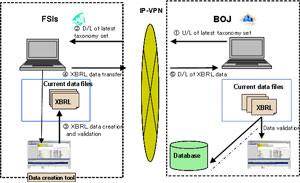
XBRL: A new corporate reporting tool
Jamil Sharif and Md Maniruzzaman (Shesher) | Friday, 17 January 2014

Given the increasingly complex, competitive and fast-paced global business environment, recognition of broader societal stakeholder interest in business activities and the increasing social demands for corporate accountability, the requirement of quantitative and qualitative financial reporting has increased substantially over the last twenty years. To deal with the variety and magnitude of modern financial reporting, those involved in the process have increasingly turned to computer and telecommunications technologies.
Financial information plays two important roles in a market-based economy. The first one is to provide ex ante information to the potential investors and creditors so that they can assess profitability of an investment. The second one is the ex post information provided to the existing stakeholders to ensure well-mechanised corporate governance. There has been a conflict between the owner and the management of an agency. The management possesses real-time information, but the stakeholders do not. Timely information is much more important for both investors and creditors, because due to the lack of timely information a good investment opportunity may lapse. On the other hand, the management may show a shirking behaviour with the investors on information asymmetry. Naturally, a question arises on dissemination of financial information.
The annual report is a 'post-mortem report', because stakeholders have to wait minimum one year and three months for having audited financial information. On the other hand, the quality of corporate disclosure is not up to the mark yet. It has been found that there is a substantial variation in disclosure requirements in financial reporting. This ranges between 35.85 per cent and 94.34 per cent. It has been found that, on an average, companies disclose information on only 43.53 per cent of the items asked for indicating poor compliance with the mandatory rules. In such a situation the Extensible Business Reporting Language (XBRL) could be a possible solution, because it provides instant information to the users.
The XBRL is a comparatively new term in financial reporting. The XBRL is an open standard-based reporting system being built to accommodate the electronic preparation and exchange of business reports around the world. The XBRL International is a non-profit consortium initially created by the American Institute of Certified Public Accountants (AICPA), but now it is a separate entity. It started back in 1999 with 12 organisations as the founding members. But now it has over 600 major companies, organisations and government agencies.
XBRL, which is an open standard and free-of-licence-fee tool, has two basic elements that make it quite easy to understand. The first is called "taxonomy" and the second is "an instance document". Taxonomy refers to the hierarchical classification of things or principles. In an accounting taxonomy, for example, Accounts Receivable is a sub-set of Current Assets which itself is a sub-set of total assets. The primary objective of XBRL is to present a financial report in a meaningful way so that users can visualise, collect and analyze data.
According to various researchers, e-reporting like XBRL is gradually getting as much popular as e-commerce. This sort of reporting stores financial data on a web-server and, as a result, investors, creditors, regulators and other interested parties can easily use financial information. As is the current reporting practice, with some exceptions, business organisations normally provide financial information through PDF files, newspapers, annual reports, where nothing could be found except some numerical figures. It may not be possible for investors, who might not be specialists in finance or accounting i.e. layman investors, to analyse the detailed information. XBRL is a possible solution for this, because it not only produces financial reports, but also generates graphs, charts and comparisons. Besides this, availability of real-time data is not possible. Global organisations like Microsoft, United Technologies and Ford are using XBRL where instant information is provided on their website.
XBRL is being used across a wide range of sectors, including securities regulation, banking, insurance, data aggregators and taxation, as well as for non-financial reporting, such as carbon disclosure, sustainability efforts and risk reporting. In the context of reporting in Bangladesh, this concept of reporting may be adoptable. The system offers numerous advantages to the stakeholders. It is an automated system that is efficient and reliable. It also saves time and money. Ultimately these help the decision makers take a decision timely. On the other hand, regulators can monitor the entity's financial affairs on a regular basis.
If we can adopt this system in our financial reporting context, the National Board of Revenue (NBR), Bangladesh Securities and Exchange Commission (BSEC), Bangladesh Bank (BB) and other regulatory bodies, creditors and banks could get precise information regarding any entity. As a result, malpractices like earnings management, inside trading, tax evasions and information asymmetry can be mitigated.
The writer is a lecturer of the Department of Accounting and Information Systems at the University of Dhaka. jamil9003@gmail.com. Md. Maniruzzaman (Shesher) is an Accounts and Finance Officer of the Alliance Capital Asset Management Ltd. m.shesher_bba@yahoo.com